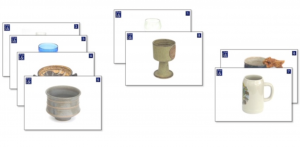One of Gordon’s most significant pieces of research, with Neil Maiden from City University, resulted in the ACRE framework. Their research question was: Why is it so difficult to get complete and correct information and knowledge out of people, even when they are actively trying to help? The reason turned out to be that there are several main categories of knowledge, memory and skill, plus numerous sub-categories, each of which has different implications for choice of elicitation method. For example, working memory has a duration of just a few seconds, so the only way to access it is via real-time elicitation using methods such as think-aloud technique. There’s more about the ACRE framework here.
The short version of the framework can be summarised as do, don’t, can’t and won’t, as shown in the table below.

Things that people do tell you about can be accessed via any technique.
Things that people don’t tell you about, but would be perfectly willing to talk about, are semi-tacit. Examples include working memory; things people don’t think are worth mentioning; and things people don’t mention because they assume you know about the topic already. To elicit semi-tacit knowledge, you need methods such as laddering, think-aloud and card sorts.
Things that people can’t tell you about involve tacit knowledge in the strict sense; for example, the compiled physical skills often known as muscle memory, and expert recognition of familiar patterns – such as a doctor recognising a medical condition. To elicit tacit knowledge, you need nonverbal methods such as observation and experimentation.
Things that people won’t tell you about directly are a special case of semi-tacit knowledge. You can get some insights into this by using projective techniques, and indirect observation.
The ACRE framework reference: Maiden, N.A.M. & Rugg, G. (1996). ACRE: a framework for acquisition of requirements. Software Engineering Journal, 11(3).
Methods tutorials
Card sorts for finding which features of an item or concept are important to people
Content analysis for making sense of what is (and isn’t) in a text
Co-occurrence matrices for measuring similarities and differences between items and concepts, via card sorts
Hexagonal cards for generating ideas swiftly and informally
Idea commenting for developing ideas generated via other methods
Idea generation methods for larger-scale, more systematic generation of ideas, in ways that give everyone an equal voice
Laddering: an overview of the method as a whole
Laddering downward for explanations of subjective or technical terms
Laddering upward for goals and values
Likert-style scales and visual analogue scales for quantifying subjective opinions
Liking and disliking scales for getting better insights into people’s opinions
Multi-Criteria Decision-Making for choosing options systematically
Observation for systematically watching what actually happens, as opposed to what people say happens
Projective approaches for investigating topics that people are reluctant to talk about directly
Think-aloud technique for getting explanations, and for access to what’s in a person’s working memory
Visual analogue scales for finer-grained quantification of subjective opinions

Image: A card sorting session in progress